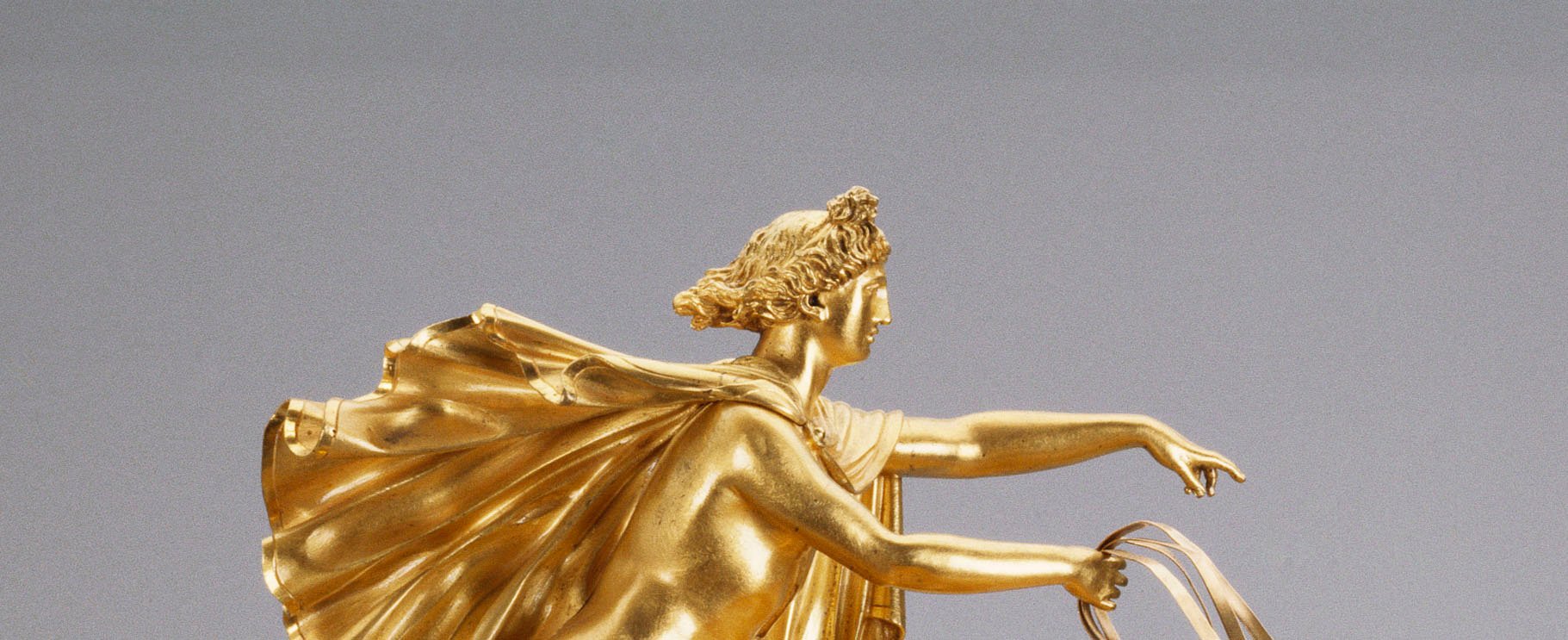
Apollo
late 18th c.RCIN 65826
Intaglio of a bust of Apollo, in profile to the right. He wears a mantle and has a band of flowers and leaves in his hair. On his back he has a quiver of arrows and a bow can be seen to the right of his shoulder.
The image is derived from a sard intaglio of the Roman imperial period although this intaglio is depicted in reverse and has several variations, notably in the drapery.
There are nine similar carnelian intaglios from the same hand recorded in the 1830 Windsor inventory of jewels. All the pieces are after highly popular and frequently copied ancient prototypes. They are all similarly shaped and have identical late 18th century mounts.
The intaglio is from the collection of Consul Joseph Smith of Venice and was acquired by George III with the Consul’s paintings, drawings, books, manuscripts and medals in 1762. However, whilst the gem was part of Consul Smith’s collection it is unlikely that it was executed in Venice; engravers capable of such high-quality work were found only in Rome. The group may tentatively be attributed to Anton Pichler (1697-1779) or Carlo Costanzi (1703-81). Both were Roman gem-engravers of great repute; Costanzi was particularly famous for his copies after the antique - he is known to have engraved the head of Antinous several times - ‘and none better - according to one contemporary.
Text adapted from Ancient and Modern Gems and Jewels in the Collection of Her Majesty The Queen, London, 2008







